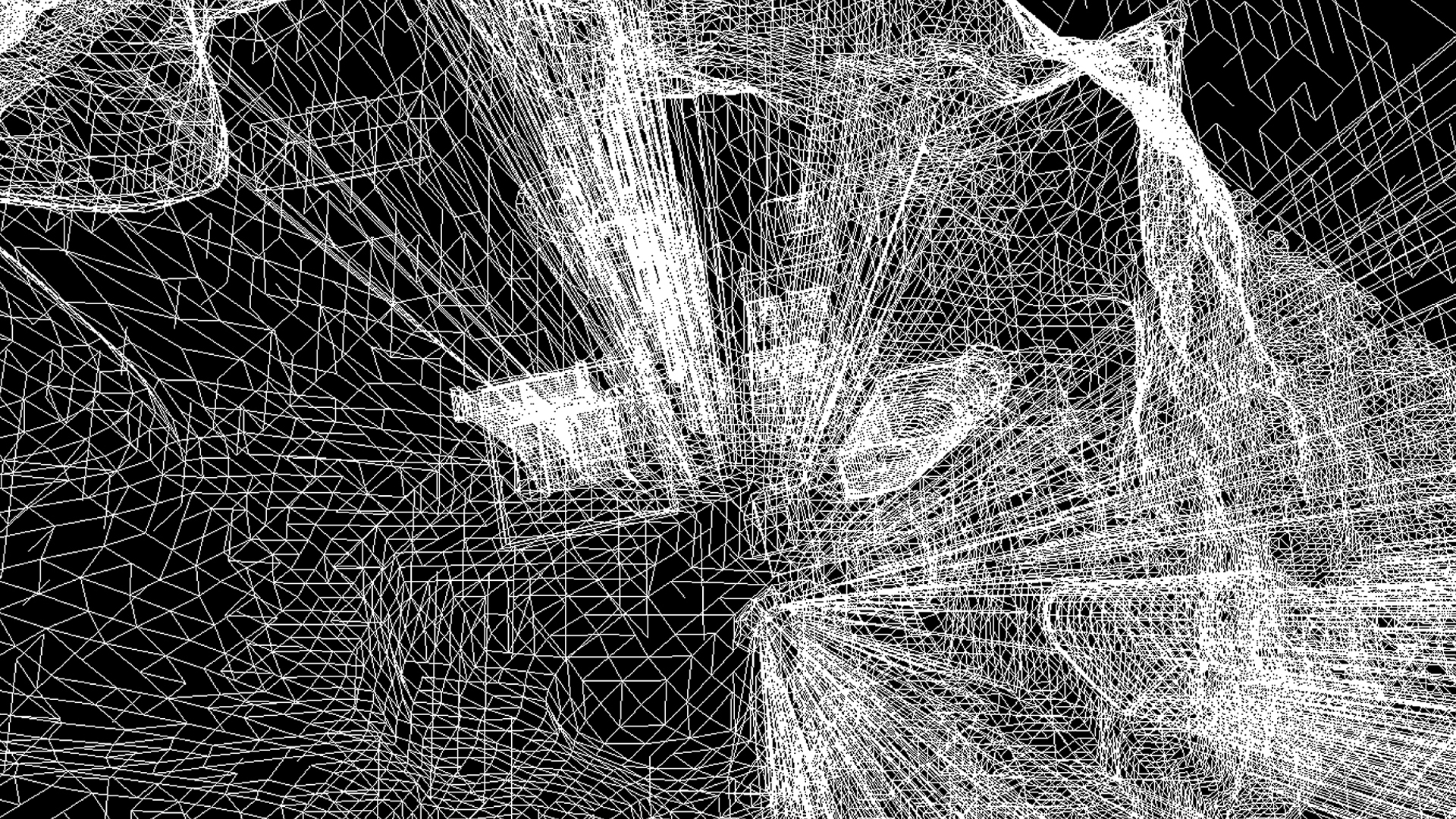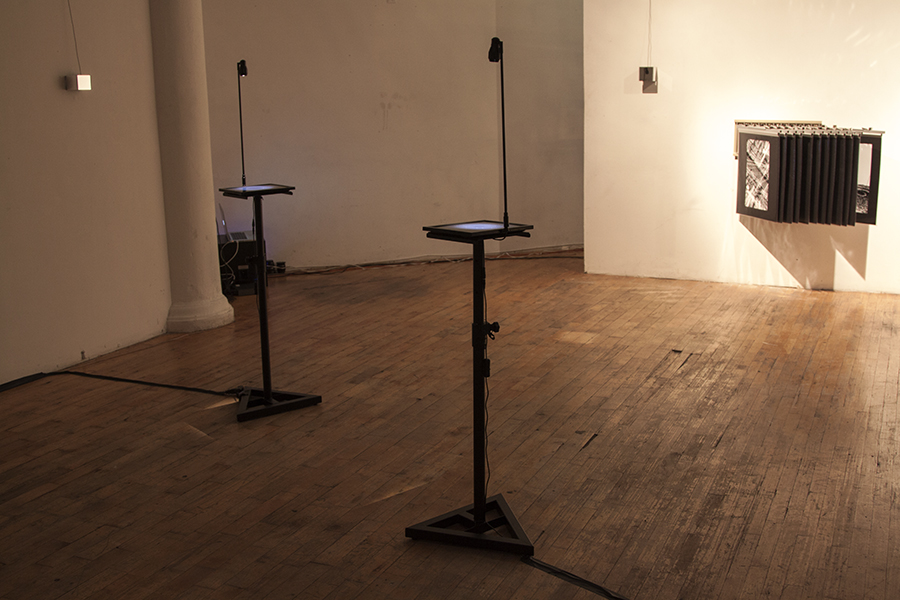ENG
MEMORYSCAPES, 2013-2016. Multimedia installation composed of the following elements: one holographic map of Venice, X:60 Y:120cm; 7-channels immersive audio installation, twenty-four digital studies hanged on a wall rack, X:45 Y:60cm each, one artist book. Variable dimensions.
MEMORYSCAPES investigates how memory and reality affect one another, through notions of architecture and related mental images, resulting in a complex body of work that includes immersive audio installations, multimedia documentation, and cutting-edge holographic technology.
In 2013, I started looking for Italians living in New York City who would allow me to interview them; specifically ones who expressed an emotional link to the city of Venice. I wanted to explore how an objective 3D model of Venice could be altered and glitched by the collective memories of its former residents. Through the interviews, I gathered large amounts of architectonical data (structures, distances, descriptions, dimensions, details) as well as stories and memories that were audio-recorded, creating a memory archive. I developed a way to merge their personal memories of the city with tridimensional satellite data, creating a holographic and fragmented “audio-cartography” of Venice. New phantasmagoric and paradoxical structures appeared, created by this unforeseen combination of technical and mnemonic errors.
THE INTERVIEWS
THE STUDIES
THE PUBLICATION
A printed publication, fragments, was created highlighting the poetry of the collected memories.
THE INSTALLATION
PRODUCTION PROCESS
- Finding Italians in New York City who have lived in Venice.
- Interviewing them in a recording studio (Harvestworks Studio A) with the support of audio engineer Kevin Ramsay
- Downloading satellite data of Venice from Open Street Map.
- Using OSM2World to create a low-polygon tridimensional city model of Venice with street data from Open Street Map.
- Extracting all the useful information from the audio interviews (structures, distances, descriptions, dimensions, details, etc.)
- Importing the 3D model to Blender and manually integrating it with data from audio interviews.
- Documenting the process and producing a series of related digital images.
- Perfecting the final 3D model using Autodesk 3Ds Max, CINEMA 4D and ZScape® Preview Pro
- Printing the 3D model as a hologram using Zebra Imaging technology.
- Using the fragments of the audio recordings to create an immersive audio installation with the holograms.
- Producing a publication called fragments.
EXHIBITIONS
- FFF (Francesco Fabbri Foundation) – Francesco Fabbri Prize for Contemporary Art, curated by Carlo Sala in collaboration with Andrea Bruciati, Martina Cavallarin, Stefano Coletto and Raffaele Gavarro, Villa Brandolini, Pieve di Soligo (TV), Italy
- IEEE VISAP’15, Data Improvisations, curated by Angus Forbes, Fanny Chevalier and Daria Tsoupikova, LeRoy Neiman Center, School of the Art Institute of Chicago, US
- (Solo Exhibition) NYEAF 2015 – New York Electronic Art Festival, Harvestworks Digital Media Arts Center, NYC, US
PRESENTATIONS
- Presented during the talk “Computative Metamorphosis” at Expressive 2015, Idea Chain, (2015) curated by Angus Forbes and Anil Camci, Incubation Center of Koç University, Istanbul, Turkey
MEMORYSCAPES was awarded the First Prize for Emerging Art of the Francesco Fabbri Prize for Contemporary Art, fourth edition.
This project is made possible in part with public funds from the New York State Council on the Arts’ Electronic Media and Film Finishing Funds grant program, administered by The ARTS Council of the Southern Finger Lakes.
Special thanks to Harvestworks Digital Media Arts Center, Zebra Imaging Technology, and Kevin Ramsay, sound engineer.
(SELECTED) BIBLIOGRAPHY

[INTERVIEW]
Doppiozero
“Glitch: la verità nell’errore. Conversazione con Emilio Vavarella”
Interview by Mauro Zanchi and Sara Benaglia, 5 July 2020. (ita)
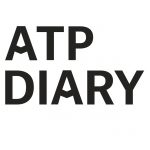
[INTERVIEW]
ATP Diary
“Nuove ipotesi di realtà. Intervista con Emilio Vavarella (New hypotheses of reality: interview with Emilio Vavarella)”
Interview by Elena Bordignon, January 2020. (ita-eng)

[PROJECT REVIEW]
ATP Diary
“MNEMOSCOPIO di Emilio Vavarella: un’installazione d’arte pubblica”
by Irene Angenica, March 2020. (ita)

[INTERVIEW]
Exibart
“Digitale Off Limits: intervista a Emilio Vavarella”
Interview by Maria Chiara Wang, July 2020. (ita)

[PRESS COVERAGE]
ATP Diary
“Ramdom a Gagliano del Capo, Lecce: fare e vivere di cultura e arte”
Interview by Elena Bordignon. 21 November 2019. (ita-eng)
[SOURCE]

[INTERVIEW]
Objects.
“Glitch, quando l’errore diventa arte. Intervista a Emilio Vavarella”
Interview by Maria Chiara Wang, 2018. (ita)
[PDF | SOURCE | ARCHIVED]

[INTERVIEW]
Museo Rimodificato: Art sine Scientia nihil est
“Emilio Vavarella: The Sicilian Family”
interview by Giulia Meloni for Antoni Muntadas Visual Arts Lab at Iuav University of Venice, 2016. (ita)
[PDF]

[ARTIST BOOK]
fragments
Independent publication by Emilio Vavarella
NYC, US, 2015 (ita-eng)
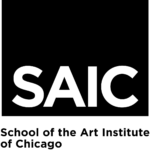
[EXHIBITION CATALOGUE]
Data Improvisations
“MEMORYSCAPES”
Official catalogue VISAP’15, p.21. (eng)
[PROJECT]

[EXHIBITION REVIEW]
KRITIKA
“Premio Francesco Fabbri per le Arti Contemporanee 2015”
2015. (ita)

[CRITICAL TEXT]
Areo
“Orizzonti Mobili”
by Carlo Sala, Speciale Cultura 6, n.52, 2016, pp.158-160 (ita)

[ARTICLE]
SottoboscoDigitale: Artisti Digitali Italiani.
“Emilio Vavarella, Questione di Memoria”
by Valeria Crisafulli, 2018 (ita)

[PRESS COVERAGE]
EXIBART
“Premio Francesco Fabbri per le Arti Contemporanee: ecco tutti i nomi dei finalisti della quarta edizione”
2015. (ita)
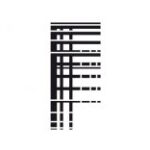
[EXHIBITION CATALOGUE]
Premio Francesco Fabbri per le Art Contemporanee
“Vincitori: Emilio Vavarella”
Official Catalogue, 2015. (ita)

[PRESS COVERAGE]
EXIBART
“Emilio Vavarella, Davide Tranchina e Christian Manuel Zanon: Ecco i nomi di tutti i vincitori della quarta edizione del Premio Francesco Fabbri per le Arti Contemporanee”
2015. (ita)

[PRESS COVERAGE]
Artribune
“Emilio Vavarella per l’Arte emergente, Davide Tranchina per la Fotografia contemporanea. Ecco i vincitori del Premio Fabbri 2015″
2015. (ita)

[INTERVIEW]
Loosenart
“Glitch: The Truth in the Error. A Conversation with Emilio Vavarella”
by Sara Benaglia and Mauro Zanchi, August 2020. (eng)
[SOURCE (eng) | ARCHIVED]

[INTERVIEW]
Artribune
“Tessitura, memoria e tecnologia. Intervista a Emilio Vavarella”
by Cecilia Pavone, September 2020. (ita)
[SOURCE (ita) | ARCHIVED]

[INTERVIEW / BOOK]
Metafotografia, Vol.2. Le mutazioni delle immagini
“Intervista 25: Emilio Vavarella”
Edited by Mauro Zanchi and Sara Benaglia (eds.) Skinnerbox, Jesi (Italy), 2020, pp. 112-117. (ita-eng).
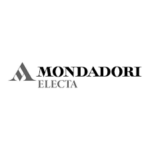
[BOOK]
Arte e tecnologia del terzo millennio. Scenari e protagonisti [Art and Technology in the Third Millennium: Landscapes and Protagonists]
Catricalà, Valentino and Cesare Biasini Selvaggi, I Quaderni della Collezione Farnesina, Vol. II, Milan: Mondadori Electa, 2020. (ita-eng)
[PDF ]

[PROJECTS REVIEW]
Neural
“MNEMOSCOPIO and rs548049170_1_69869_TT (The Other Shapes of Me)”
by Alessandro Ludovico, Issue 67, Autumn 2020. (eng)
[PDF | PROJECT (1) | PROJECT (2)]

[MA THESIS]
NABA – Nuova Accademia di Belle Arti
“Emilio Vavarella: Esseri Umani, Tecnologia e Memoria”
by Amico, Chiara. Missing the Signal. MA Thesis in Fashion and Textile Design. NABA: Nuova Accademia di Belle Arti, Advisor: Andrea Cammarosano, 2023, pp-122-142. (ita)
[PDF]


























